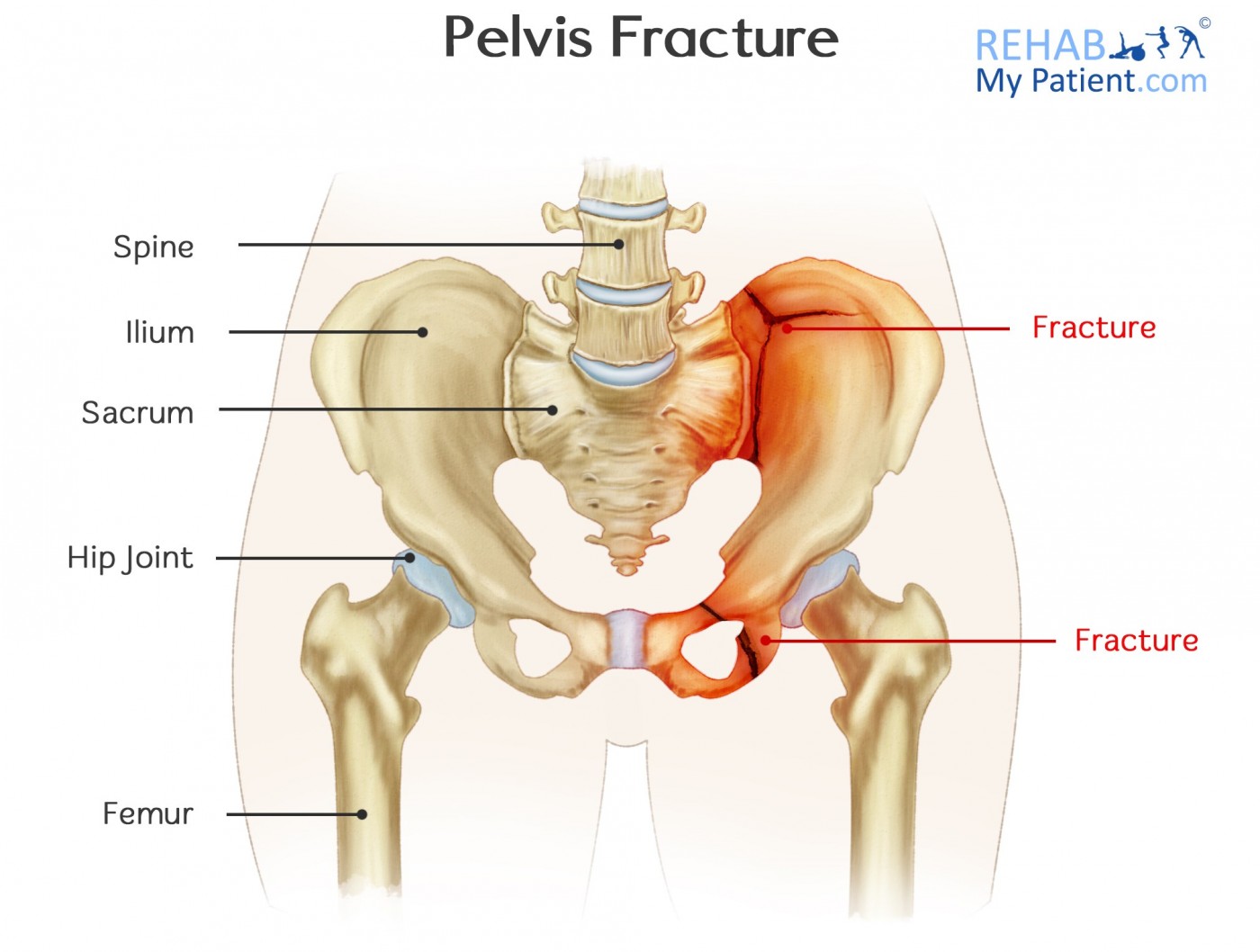
Your pelvis is the ring of bone around your waist, and although not particularly common, a pelvic fracture can occur if one part of this ring sustains enough force.
Most pelvic fractures are sports injuries, with snow sports being one of the most common. A fall from snowboarding, skiing, or while jumping or doing tricks on the board/skis is a common cause of fracture.
Also growing teens, especially ones who participate in sports, are one of the largest group of individuals who are at risk for this type of fracture. Many of the pulled muscles might be an undetected avulsion fracture of the pelvis region. Most of the time, these fractures occur when the muscles suddenly contract. Small pieces of bone from where the hamstring muscles are attached is torn by these muscles from ischium. This fracture doesn’t make the pelvis unstable, and it doesn’t cause any injury to internal organs.
Elderly individuals with osteoporosis are also at risk for the condition. Individuals can fracture their pelvis when falling down from standing, such as when walking down stairs or getting out of the tub. These injuries can either damage the structure of the pelvic ring, or they can fracture individual bones in the pelvis. However, this is uncommon compared to fracturing the “head of the femur” or what is typically referred to as a hip fracture, i.e. the ball and socket joint.
Most fractures involve extreme forces, such as those commonly found in an automobile accident, fall or a crush accident. Depending on the degree and direction of the force, these injuries could potentially be life-threatening and necessitate the need for surgery. Fortunately most pelvic fractures are not associated with any complications.
Pelvis Fracture Anatomy
The pelvis is a ring-like structure composed of bones that lies at the lower part of the trunk. The two sides of the pelvis are composed of three bones that grow together when people age. Strong connecting tissues join the pelvis to the larger triangular bone at the base portion of the spinal column, which forms a bowl-like cavity that lies just below the ribs. On either side, a hollow cup serves as the socket for the hip joints.

Many of the reproductive and digestive organs are found in the pelvic ring. Blood vessels and large nerves running down the legs pass through it. The pelvis is an attachment point for muscles running down the legs and into the trunk of the body. Pelvic fractures can cause significant bleeding, injury to the nerves and damage to internal organs.
How to Treat a Pelvis Fracture:
- Non-Surgical Treatment
Stable fractures, which are those normally experienced by athletes, will often heal without having to worry about surgery. Patients might have to use a walker or crutches. Don’t expect to put all of your weight on the legs for up to three months, or at least until the bones are properly healed. Medication might be prescribed to help minimize the pain. Since mobility is often limited for months at a time, you might be prescribed a blood-thinner to help minimize the change of blood clots forming within the veins of the legs.
- Post-Injury Rehabilitation
Rehab usually involves improving range of mobility to the hip joints, and helping the patient to gradually put more weight through the legs. Stability exercises to the hip and pelvis will be important, followed by strengthening exercises.
Tips:
- If you were involved in a high-energy trauma and have pain around your pelvis or having difficulty walking, go to your local hospital. The doctors will examine you and decide if they need to do an X-ray.
- Individuals with stable fractures often heal fine. Fortunately the pelvic girdle is a solid ring and this is an advantage for healing.
- Due to the damage and inflammation surrounding the pelvic muscles and joints, it isn’t uncommon to walk with a limp for a few weeks.
- If you experience impaired mobility, pain or sexual dysfunction, these issues need further investigation.
- When playing sports, do everything you can to prevent any forceful hits to the pelvic region.
Sign Up
Sign up for your free trial now!
Get started with Rehab My Patient today and revolutionize your exercise prescription process for effective rehabilitation.
Start Your 14-Day Free Trial